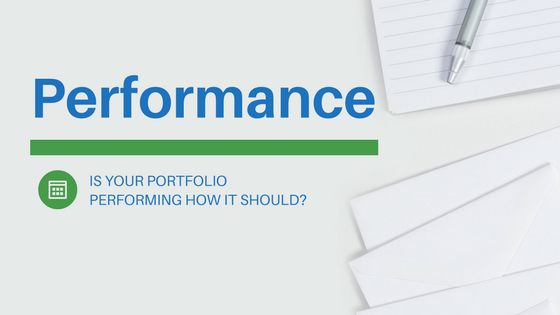How to Review the Performance of your Investments

Your investment statements are arriving, so many of us will take a look at our investment accounts to see how we (or our advisor) did. Unfortunately, it can be a bit confusing to determine if we did well, average or poorly. Let's look at the items that will help you determine how you did.
- How much risk did you take in your portfolio? If you are not sure how much risk you have in your portfolio, it will be pointless to check the benchmarks to see how you did. Were you aggressive? Moderate? Conservative? That's where we start. If you're not aware and you're working with an advisor, have them explain this to you in plain English. For example, BeManaged manages risk on a 1-9 scale, with 9 being the most aggressive. Therefore, it's easy for people to determine how much risk they are taking within their portfolio. (We also have a 'target range of risk' for each profile that provides more detail, but that's another discussion for later). The point is, make sure you know how much risk you have in your portfolio before moving on to #2.
- Compare your performance with the right benchmark. A benchmark is an index or mix of indexes that provide you a measure of performance. However, you need to make sure the benchmark you are using has the same makeup and risk profile as your portfolio. Otherwise, you could be comparing a glass of wine to a grape soda. A typical, real world example is that people will compare their portfolio with the S&P 500. If you have a diversified portfolio, then the S&P 500 is a grape soda compared to your glass of wine.
Once you have the numbers in front of you, there are a few realities to remember.
Benchmarks are rarely apples-to-apples. Why?
- Inexact levels of risk - If you are in a diversified portfolio of stocks and bonds (large, mid and small-cap companies, international, bonds and cash), it can be difficult to find the perfect 'apples to apples' index.
- Example: Let's say you are a moderately aggressive investor and on a scale of 1-100 (100 being aggressive), your benchmark has a risk level of 80. However, your portfolio is a 70. The performance numbers will like trail in an 'up-market' due to taking less risk than the benchmark.
- Benchmarks have no fees - Keeping your fees low leaves more money in your account working for you. Benchmarks have no fees, so you need to take into account the cost of the investments (and sometimes management fees) when considering how well your portfolio has performed.
- Example: If your portfolio and benchmark are 'apples-to-apples' on risk, but your portfolio costs are 1%, you should expect to trail the benchmark by about 1%.
Determining whether your portfolio is performing appropriately requires making sure you have the right information. If you would like to review the risk in your portfolio and talk about how your portfolio compares to the benchmark, click below to schedule a free consultation.
Want to determine if your portfolio is 'right?'
Schedule a free consultation for your 401k and/or IRA!
